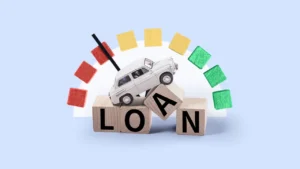When it comes to buying a car, the choice between a car loan and leasing can have a big impact on your budget and the way you drive. Both options have pros and cons that you should be aware of so that you can make an informed decision that fits your needs and lifestyle.
1. Understand Car Loans
Credit unions and banks offer car loans so that people can borrow money to buy a car. When you borrow money, you will have to make monthly payments until it is fully paid off. Once the loan is closed, you own the car outright. As an owner of this car, you enjoy a lot of freedom, you can drive as much as you want without worrying about the gas limit, and you can keep or sell the car as you wish. Additionally, the loan payments may be higher than the lease payments, but you create value for the car. Another advantage of owning a car is that you can continue to drive the car for many years after your loan is paid off. This can save you money in the long run.
2. Consider Leasing Options
When you lease a car, you lease it for a set period, usually two to four years. During the lease, you make monthly payments based on the car’s depreciation and your interest rate. When your lease is up, you return the car to the dealer and can either lease a new car or buy the car you leased. When you lease instead of borrowing money to buy something, you typically have a smaller down payment and lower monthly payments. However, when you lease a car, your mileage may be limited and you may be charged for any additional damage to the car. If you enjoy buying a new car every few years and don’t mind the limitations of leasing, this is your best option.
3. Consider How Much You’ll Pay Each Month
The monthly payment is one of the most obvious differences between a loan and a lease. Leasing typically has lower monthly payments than financing a car. That’s because you’re paying for the lost value of the car during the lease term, rather than the full purchase price. Leasing can be a good option for those who want to drive a newer model but don’t want to commit to higher monthly payments. But it’s important to consider how much leasing will cost you in the long run and compare that to the cost of a car loan, which may have higher payments but gives you ownership at the end of the term.
4. Evaluate Ownership and Equity
Every time you make a payment on your car loan, the value of your car increases. After your loan is paid off, you can keep the car if you want. With this type of ownership, you can drive it as much as you want, and if you need a new car, you can sell it or trade it in. On the other hand, when you lease, you don’t own the car; you simply rent it. When the lease is up, you have to return the car to the seller. Leasing can be a good option for people who like to drive a new car all the time, but it doesn’t allow you to build equity or own a car.
5. Consider Mileage Limits
Mileage limits are an important factor when deciding between buying and leasing. Most leases have a limit on the number of miles you can drive per year, usually between 10,000 and 15,000 miles. If you exceed these limits, you may have to pay additional fees at the end of the lease. This can be a problem for people who drive long distances frequently. When you take out a car loan, you don’t have to worry about extra costs because you can drive as much as you want. For people who plan to drive often, a loan may be the best option.
6. Evaluating Maintenance and Repair Costs
When you lease a car, the manufacturer’s warranty usually covers you for the duration of the lease. This helps to reduce the cost of repairs and maintenance. Most lease terms are three to four years, which means the car may still be under warranty during that time. This means you’ll pay less for repairs. However, once the warranty expires, you’ll have to pay for repairs and maintenance while you own the car you’re renting. These prices can vary greatly depending on the age of the car. When deciding between renting and buying, it’s important to consider how much it will cost to repair things.
Conclusion
Getting a car loan or leasing a car depends on your personal preferences, driving habits, and how much money you have. If you want to keep your car for a long time, drive it for a lot of miles, and value ownership, then a car loan may be a better option for you. On the other hand, if you want to buy a new car every few years, leasing may be a good option because the monthly payments are lower and there are range limits that can be adhered to. To make the best choice for your situation, you should carefully consider your needs, budget, and lifestyle.
FAQs
1. What is the main difference between leasing a car and taking out a loan?
A car loan allows you to borrow money to buy a car. When you pay off the loan, you own the car outright. Typically, you have to pay more each month, but you build equity and can keep the car if you need it. Leasing is renting a car for a set period. Typically, monthly payments and down payments are lower, but you must return the car at the end of the lease and not exceed mileage limits.
2. What is the difference in monthly payments between buying and leasing?
Leasing typically has lower monthly payments than buying a car. That’s because lease payments are based on how much the car depreciates over the lease term, not how much it costs to buy. When you get a car loan, you pay off the entire price of the car over time, which means your monthly payments will be higher.
3. How many miles can I drive with a rental car?
Most leases have a limit on the number of miles you can drive per year, usually between 10,000 and 15,000 miles. If you exceed these limits, you may have to pay additional fees at the end of the lease. If you drive long distances frequently, this could result in higher costs.
4. Can I change my rental car?
Yes, modifications to rental cars are generally not allowed. The car must be returned in the same condition as when you received it. Any modifications may incur additional charges. If you want to make modifications to your car, a loan may be a better option.
5. What do you do when your car lease is up?
When your lease is up, you have three options: return the car to the dealer, buy a new car, or lease it. If you decide to return the car, you may be charged for any excess mileage or wear and tear.
6. How does owning a home change the cost of repairs and maintenance?
Most rental cars come with a manufacturer’s warranty that lasts the length of the lease. This helps reduce the cost of repairs and maintenance. When you take out a loan to buy a car, you are responsible for repairs and maintenance after the warranty period has expired. These prices can vary depending on the age of the car and the extent of the damage.




